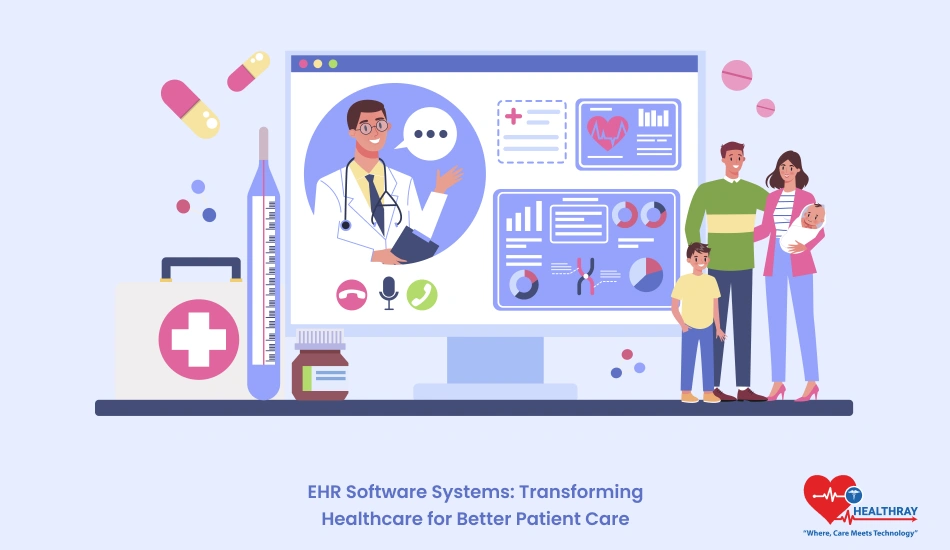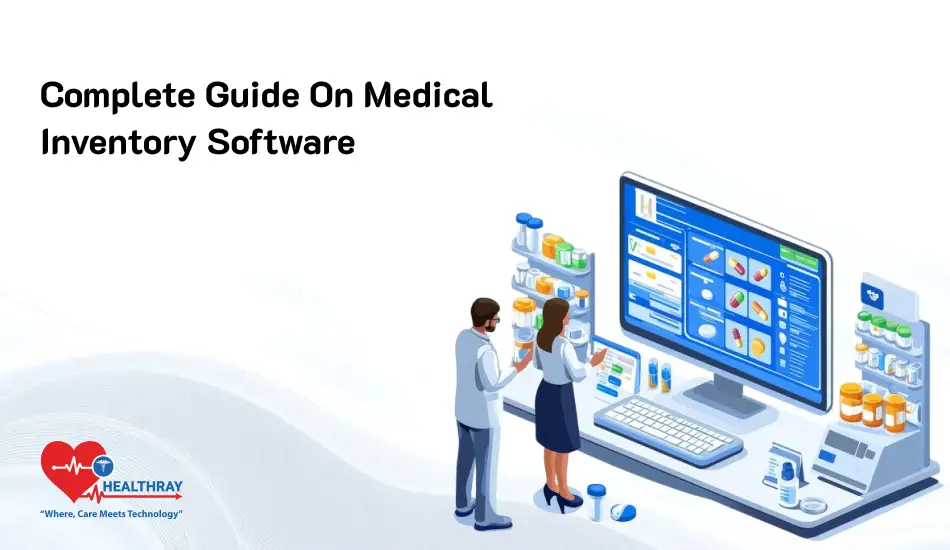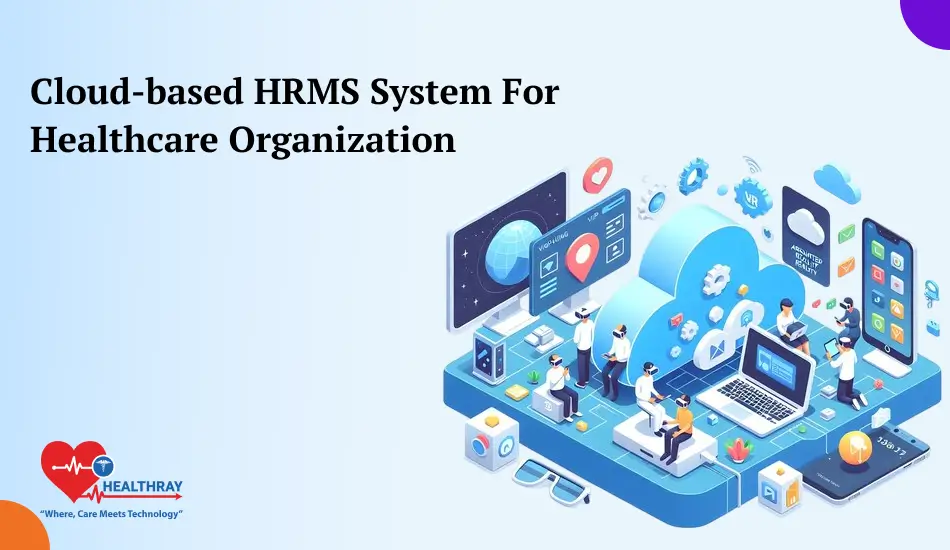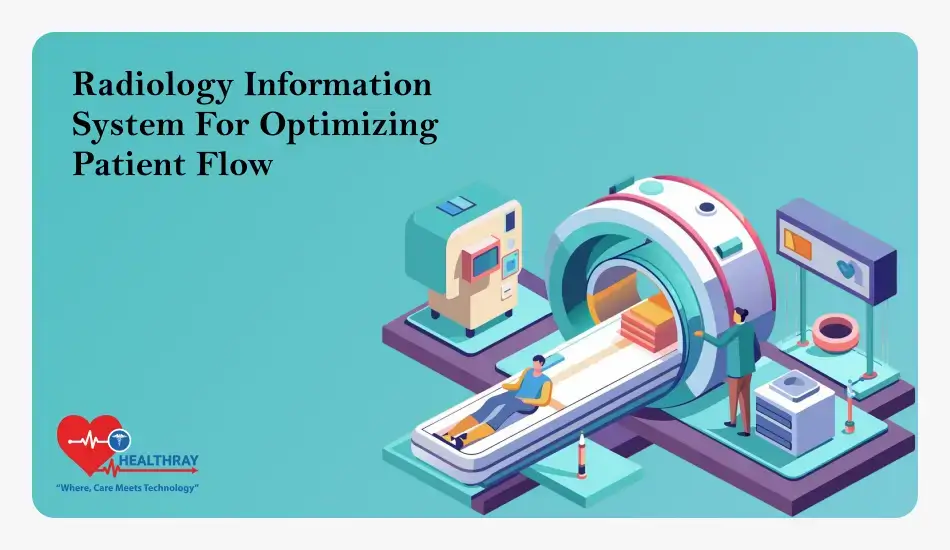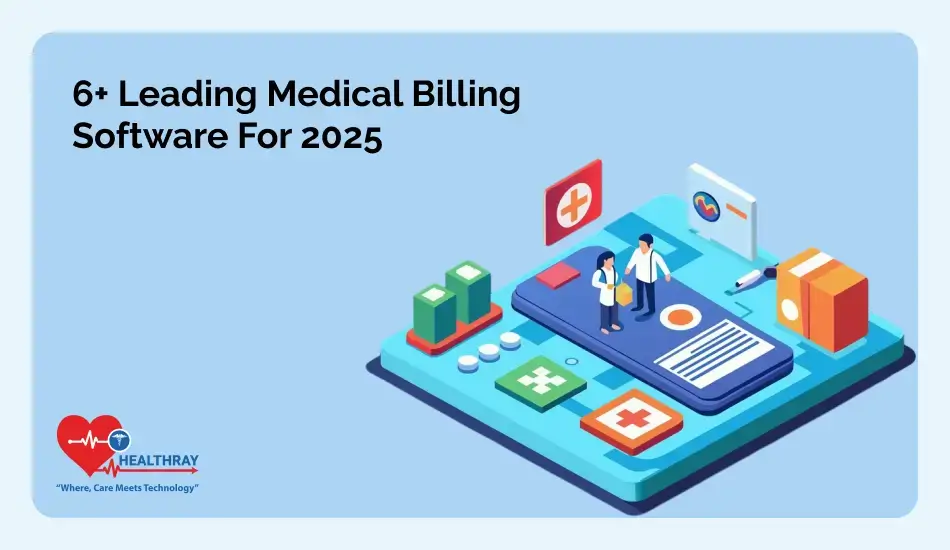Introduction
Electronic health record software systems are currently very important in modern health. The reason is that it provides digital solutions that replace paper-based recording with much more efficient, safe, and comprehensive management of the patient’s data. The core purposes of such systems involve the improvement of quality care for patients by smoothing procedures, reducing errors, and making communication easier among healthcare teams.
EHR systems make the workflow easy for healthcare administrators, doctors, and nurses. In short, they are now directly seeing the benefits in terms of improving patient outcomes from such systems. From faster access to patient histories to easier and more accurate data entry to a more collaborative treatment plan, the list goes on. But to get the best out of these digital tools, healthcare professionals must understand the full potential of EHR systems and find ways to overcome common obstacles. This piece is based on how EHR Software affects the healthcare industry, what their advantages are, and how much scope the industry offers in that space.
What are EHR Software Systems?
This shall refer to the electronic management of and storage of patient’s health information. EHRs are much different from hard copy records, which necessitate the manual reading process. Conversely, electronic platforms make for easy reading and updating on the part of the practitioners; its applications capture core details such as histories, diagnoses, treatment, a list of medications, tests, and results.
EHRs go beyond mere record-keeping; they facilitate the entire process of patient care to be streamlined. For example, doctors and nurses can access comprehensive data on the patient during consultations, making more informed and timely medical decisions. This helps save time and ensures coordination among departments and specialists in providing better quality treatment.
The core features of EHR systems include scheduling, clinical documentation, e-prescriptions, and decision support functionalities. It can make important functions more accessible to healthcare teams by minimizing manual paperwork and accuracy in patient records.
Key Benefits of EHR Systems for Healthcare Administrators
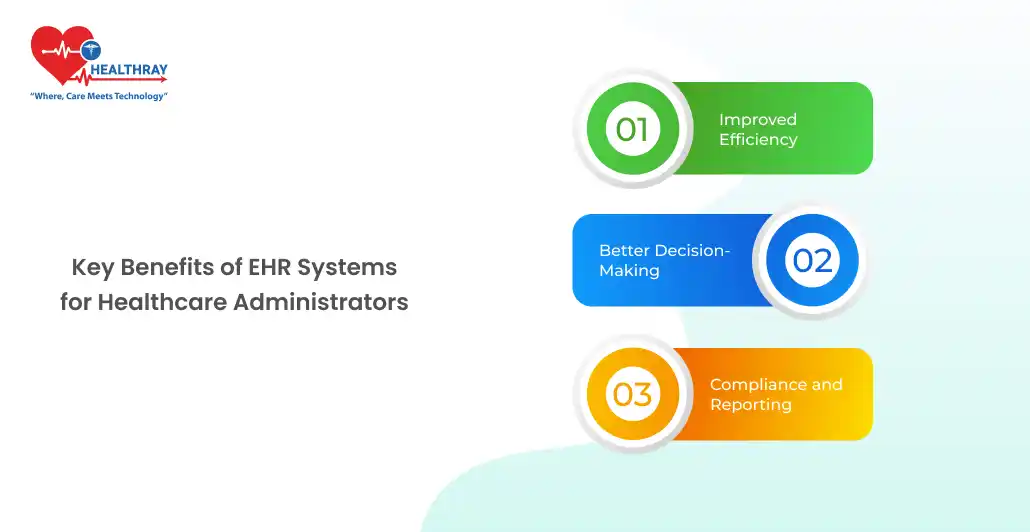
EHR systems come with a great deal of advantages for healthcare administrators and make their work much smoother and efficient. Since these are digital systems, paperwork and manual entry of data is reduced to the minimum extent, and they are free to work on high-level operational activities.
Improved Efficiency: One of the main advantages for the administrators is that EHRs make the workflow process much easier. Tasks which would have taken hours to get sorted through physical records are now completed in a much shorter time. This saving of administrative hours also effectively manages the resources of a hospital.
Rich data collection and reporting are the capabilities offered by EHR systems. Such capabilities help in data-driven decision-making where the administrator can easily access information on patient demographics, treatment success rates, and overall performance of health care. Such information is critical in planning and improving healthcare services.
Compliance and Reporting: It is really challenging to meet all the regulatory requirements, but EHRs can make it easy through automating most reporting tasks. They assist in preparation for reports that are necessary to meet compliance with healthcare standards, and it is possible to stay compliant with policies while avoiding potential penalties.
Benefits such as these show that EHRs are more than technical tools and indeed represent a very important aspect of healthcare management and could allow the administrator to monitor better care of patients and operations.
Advantage for Doctors and Nurses
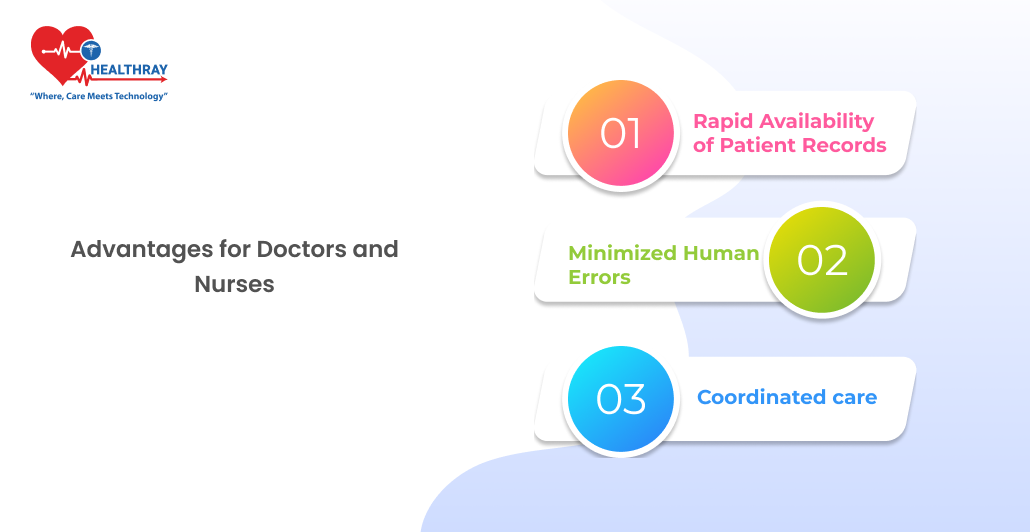
The systems for EHR will directly impact the doctors’ and nurses’ day-to-day work, making the doctors and nurses better and also ease many areas of their clinical work. Designs meant to allow the systems have practical benefits for improved efficiency, safety, in the case of medical environments.
Rapid Availability of Patient Records: This benefit is the most appreciated for physicians and other care givers in accessing the history of a patient, lab tests, and treatments in just seconds. With the help of EHRs, doctors and nurses can obtain records in seconds for immediate treatment in emergency situations and fasten their decisions with swift patient responses.
Minimized Human Errors : EHR helps reduce the chances of human error, especially in prescriptions and patient notes. Many digital input features will include checks that flag potential mistakes, such as drug interactions or allergies, for example, increasing the additional level of safety for patients. The accuracy resulting from such a system reduces preventable medical errors while creating better reliability for patient care.
Coordinated care: EHRs allow proper communication between health care professionals. Doctors, nurses, and other specialists can have discussions regarding patients’ data efficiently without the usual delay of receiving paper files across departments. This coordination ensures coordinated treatments; by doing so, all parties get on the same page, removing confusion, hence, aligning patient care cross departments.
Such benefits have helped shift the method in which healthcare providers work by affording doctors and nurses more time on the patient rather than paper work. This is due to a better experience of the patients and better job satisfaction on the part of the health professionals.
Challenges associated with implementing EHR systems include
With an array of the benefits of having EHRs, there remain problems that physicians and administrators also have to tolerate. Understanding all these problems shall make transition toward and proper exploitation of technology in health care service smooth and streamlined.
Initial cost : One of the biggest challenges with EHR implementation is that the initial cost is very high. This includes both the software as well as upgrades in infrastructure, training, and maintenance. A lot of training will be needed to teach individuals how to work with the system, which means there will be a time-consuming learning curve affecting workflow temporarily.
Data Security Issues: The data being digitalized concerning the patients leads to a serious issue of data security. Cyberattacks seem to find the soft spot in the EHR systems, and hence it eventually ends up as a data breach, where the unauthorized use of the sensitive information regarding the patients happens. Cybersecurity should be strong, along with the maintenance of privacy regulations within the safety of health data.
User Resistance: Most of the clinical staff will resist the adoption of the new technologies; this is especially so when such staff are accustomed to their traditional ways. The most common reasons for resistance, however, are often fears associated with change or extra workload. In addition to full training, it requires communication on how EHRs will benefit the staff and the patients in the long term.
They face challenges like planned and support toward the implementation and adoption of an Electronic Health Records system. A healthcare facility has therefore maximally optimized the deployment of an EHR system because it would increase improvement in quality care provided towards patients and output productivity in case of its employee.
Actual Instances of Successful Applications of EHR
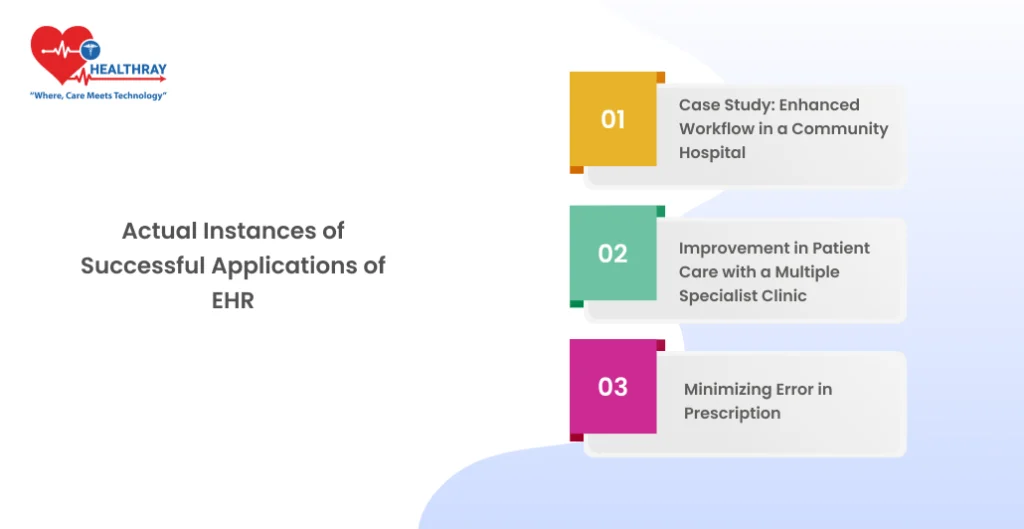
EHR systems have already demonstrated their worth in various healthcare settings, which have proven to improve patient care and streamline operations. Here are a few examples of how the implementation of these systems has led to measurable improvements.
Case Study: Enhanced Workflow in a Community Hospital
Implement EHRs with paper-based records by a small town community-based hospital. After twelve months of launch, the establishment was able to find huge efficiency within workflow. Quickly able to acquire a patient chart or a prescription list, there is a noted time reduction over other administrative requirements from the clinic while giving back extra time at work for treatment with patients and better coordination was shown among wards with a minimized record failure.
Improvement in Patient Care with a Multiple Specialist Clinic
EHR systems were adopted in a multi-specialty clinic, coordinating all cases involving a team of many specialists. With EHRs, information easily gets transferred across different departments without resulting in significant miscommunication or duplication of the tests. In an example case, a team from cardiology will be in a position to use recent work conducted by a department of nephrology. All this increased positive results on the patients as well as their coordination.
Minimizing Error in Prescription
A large metropolitan hospital determined that e-prescribing functionalities within the EHR helped significantly minimize errors associated with prescription processing. Integrated alerts from the system alerted the doctors about the possible drug interaction, dosages inconsistency, and allergies of patients. This further enhanced safety prevented the medication error, and therefore improved the patients’ trust on the processes adopted by the hospital.
These are indicators of the profound impact an EHR system makes when appropriately utilized. Through efficient improvement, heightened patient safety, and coordination care, these outcomes are realized from the integration of these systems in healthcare practices.
Conclusion
All those EHR software systems proved pretty well for the future as the basis for today’s health-care processes and properly improved care in terms of streamlining, cutting errors, and coordinated care, all these for care administrators, doctors, and nurses, providing significant rewards regarding efficiency, accuracy, and well-coordinated care. All the above benefits take efforts to ensure costs remain controllable, provide staff training, and maintain proper data security for such systems. It all justifies their application when a complete Hospital Management System is maintained within them.
The future is even brighter with promise, capability, and surety, further developing technologies that include AI, interoperability, and patient engagement features. This would suggest an integrated and effective health system, with seamless communication, proactive care for patients, and much more.
An EHR system is an investment in better patient outcomes and a more robust health infrastructure. Once thoughtfully and carefully installed, along with ongoing support, healthcare professionals are released to fully use the best a given system provides-for their own patients and thereby their practices-poised to give care that can be both potentially more efficient but patient-centered,.
